At present from a historical point of view, we should call this furniture as furniture of the Northern provinces of Korea because at the time of the “Joseon dynasty”, the country was unified. Korea was separated in two as a result of the war in the middle of the 20th century (1953).

Located a kilometer from the center of Pyongyang. “Mangyongdae” is the place of Kim Il Sung’s birth. President Kim Il Sung was born here on April 15, 1912 referred to in the DPRK as Juche 1.
Until the late 1980s, very few Korean pieces from the northern part of the peninsula were available on the market. After the opening of China, some began to slowly appear at its border with North Korea, in the northern Chinese provinces of Liaoning and, especially, Jilin. Throughout the 1990s, more pieces became available in China.

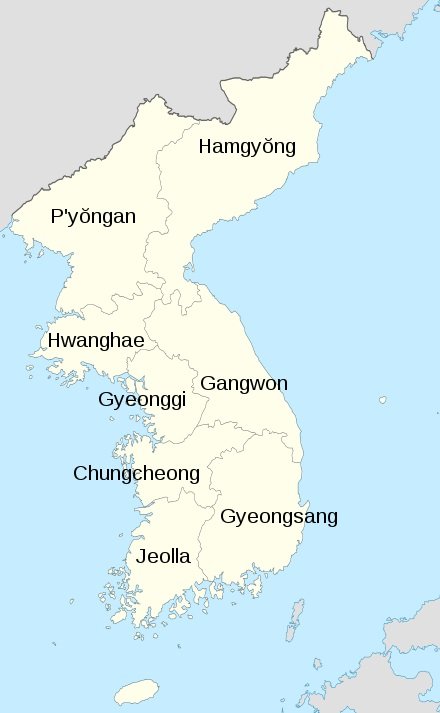
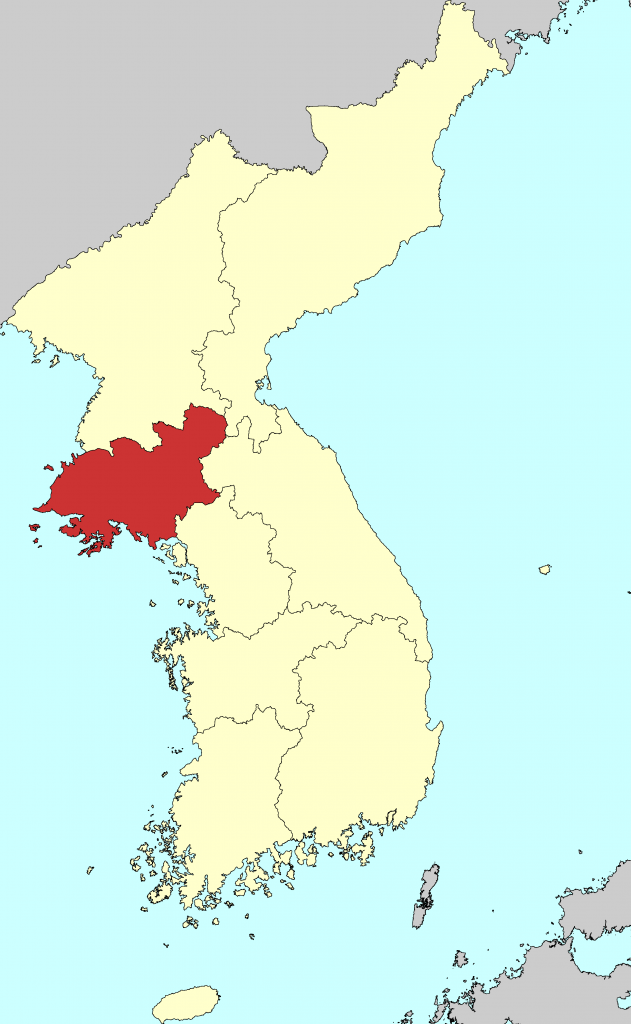
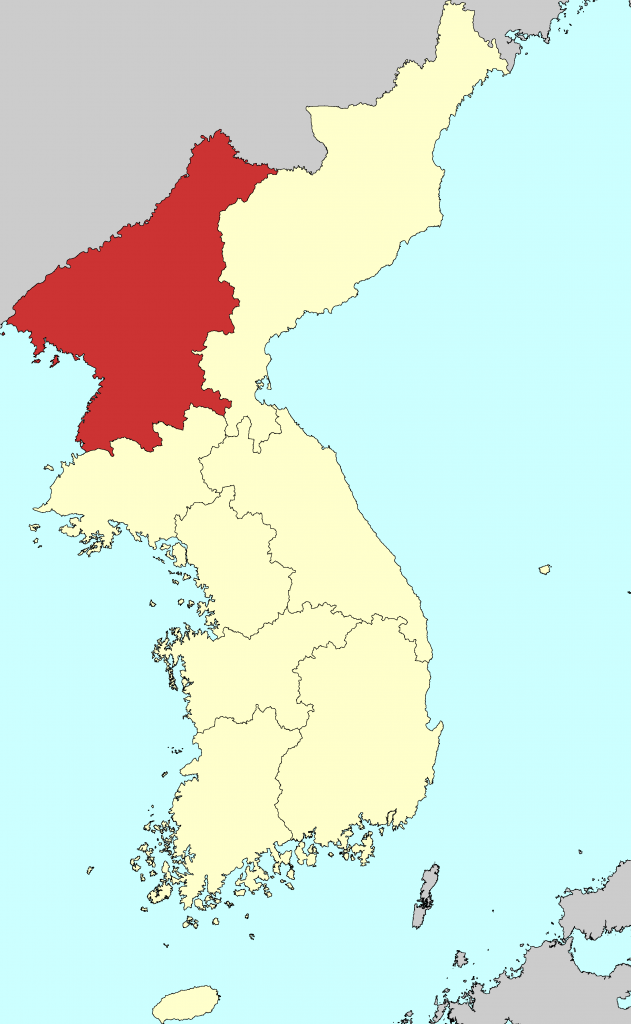

The entire Korean peninsula boasts a wide variety of woods.
In the southern part of the peninsula, hardwoods with decorative grains were readily available. Consequently, carpenters from these regions, such as Jeolla and Gyeongsang provinces, developed a preference for unadorned furniture, avoiding excessive metalwork. (A photo of a Naju Bandaji from southern Jeolla Do province is shown below.)
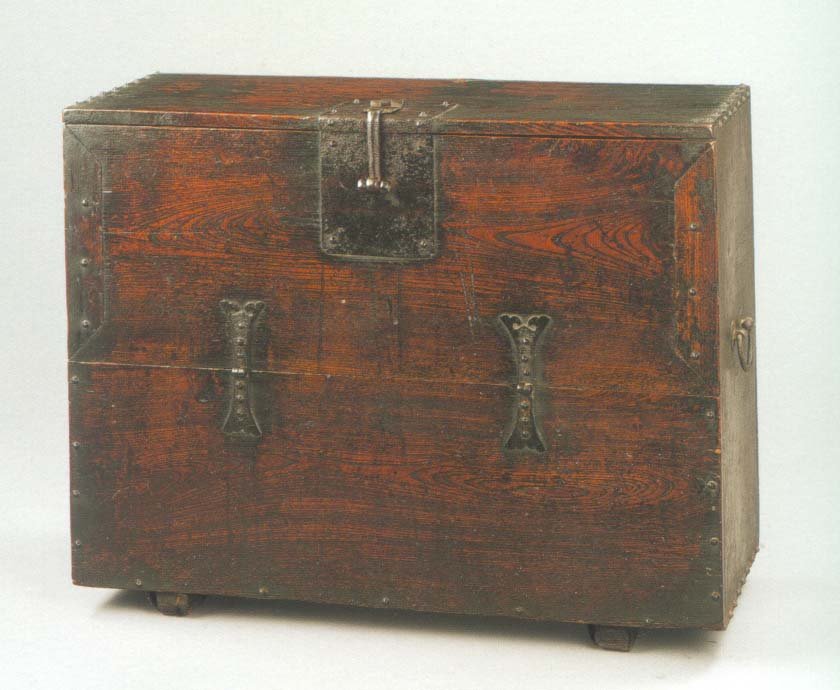
Zelkova wood with limited iron fittings. Jeolla Do province. South Korea.
Collection: Hoham Museum. Seoul, Korea.
In the north, however, the woods in greater supply were those without decorative grains. Lime wood (Pi Namu), also known as basswood and linden in the west, was a straight-grained softwood popular for bandaji construction. Other woods used included pine, chestnut, and occasionally zelkova.
Fittings were typically made from white brass, although sometimes yellow brass or iron were used.
The white brass alloy includes tin and sometimes nickel, in addition to copper and zinc. The color of the alloy depends on the proportions of the principal ingredients.
Furniture pieces from the northern part of the peninsula were typically larger than their South Korean counterparts.

Pyongyang style (left), Pakchon or Sung Sun I style (middle), Gangwha style (right).
PYONGYANG STYLE.
The distinctive feature of the Pyongyang Bandaji is the significant use of metal parts that cover its front section.
These metal parts are typically employed to conceal wood with less attractive grain, such as linden. The metalwork is most commonly made of white brass and often includes numerous auspicious patterns. For additional details, please refer to our post: PYONGYANG BANDAJI-평양 반닫이
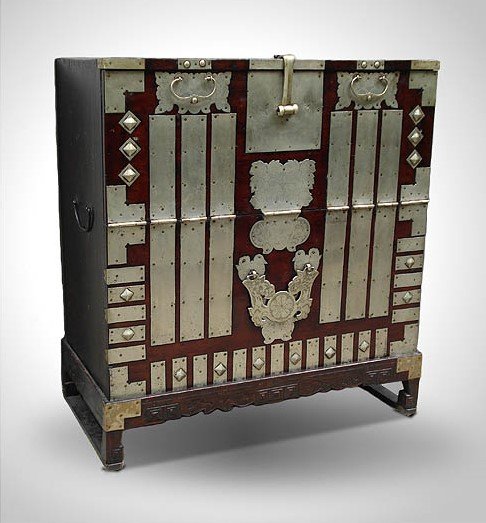
Linden wood, Pyongyang area, Pyongan Do province.
H. 106cm, L. 102cm, D. 43cm.
Mid 20th century. Collection: ANTIKASIA
Hinged front, three small interior drawers, set up on legs with decorative metal mounts, handles at the sides. Interior papered
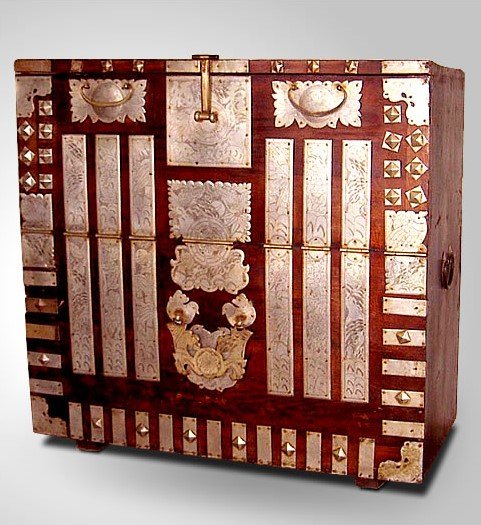
Elm wood, white brass fittings. Pyongyang area.
Pyongan Do province. Late 19th Century.
H. 85cm, W. 92cm, D. 52cm. Collection: ANTIKASIA.
This chest is unusual as elm wood was used instead of linden wood.
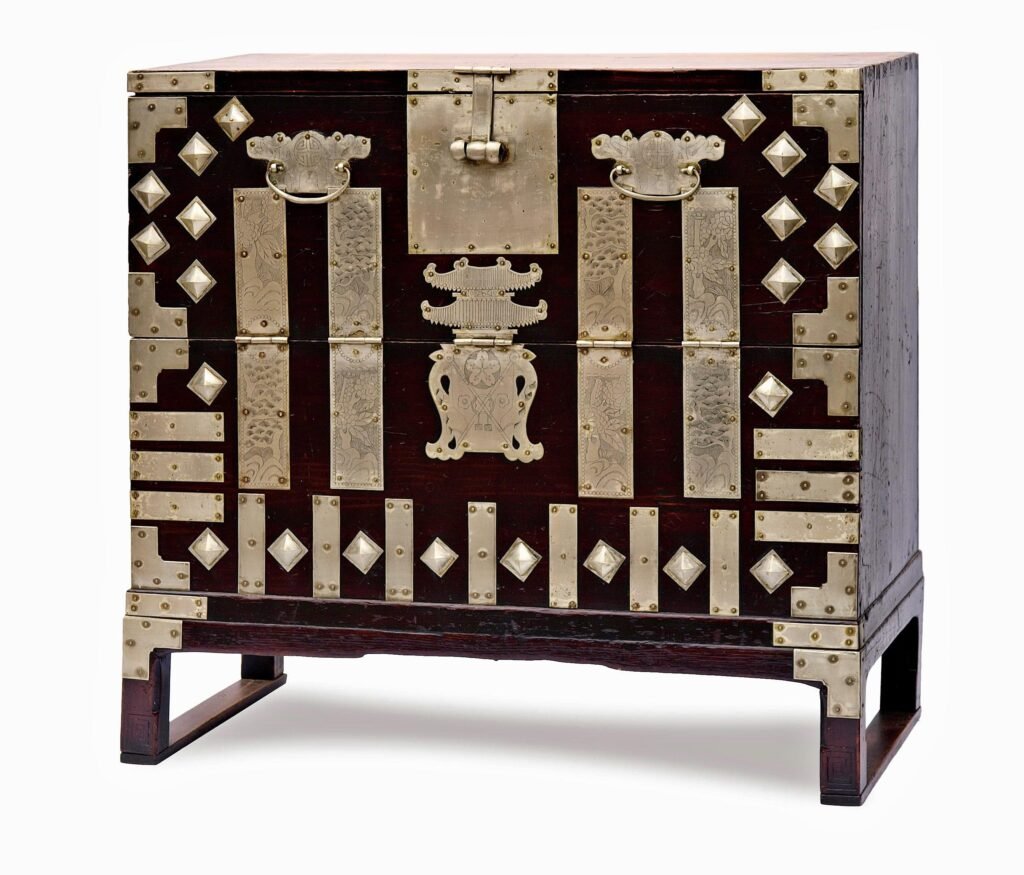
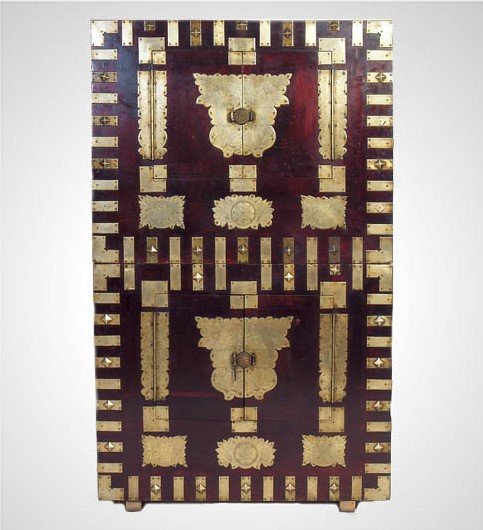
H. 138cm, W. 82cm, D. 45cm. Collection: ANTIKASIA
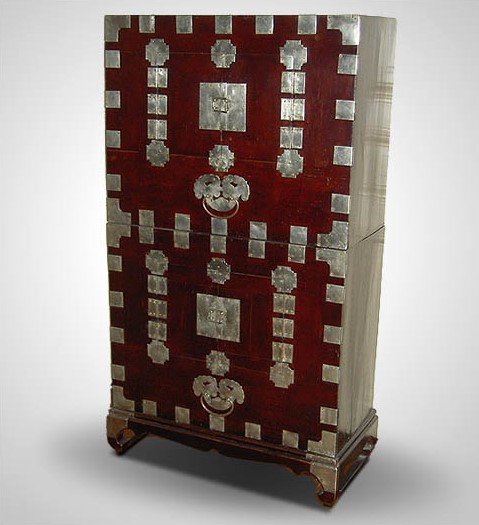
Linden wood, white brass fittings.
Pyongyang city. Pyongan Do province.
Mid 20th century.
H. 129cm, W. 77cm, D. 43cm. Collection: ANTIKASIA
SUNG SUN I STYLE.
Regarding the two previous styles, Pakchon’s Bandaji, also known as “Sung Sun I” Bandaji, is extensively adorned with metal. However, in this case, iron is used instead of brass.
The hinges are thinner compared to those of Gangwha Island and cover a larger portion of the furniture’s front.
Due to the distinctive designs of the steel plates with numerous holes, this type of bandaji is nicknamed “Sung Sun I Bandaji“. “Sung sun” is an onomatopoeic word in Korean that represents the sound the wind makes when blowing rapidly through a hole.
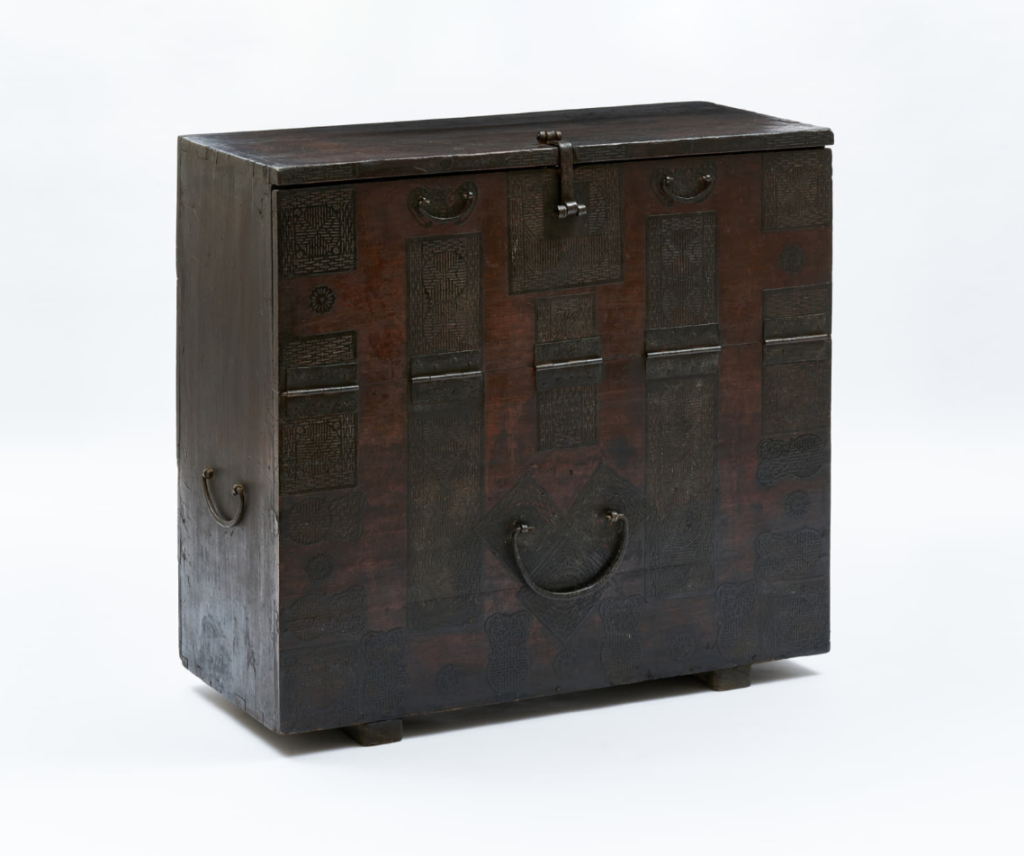
Collection Seoul Museum of Craft Art.


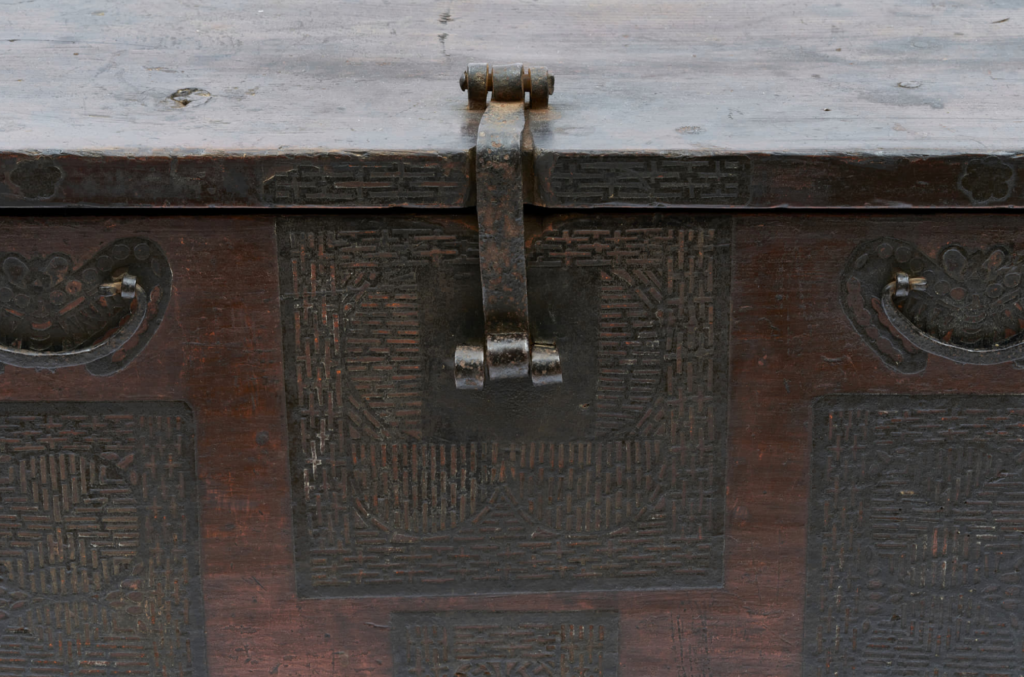
Paper cut pieces have been glued to the chest surface. Door plate (photo above) and font panel fittings (photo right.)

Five photos above illustrate a rare example of a “Sung Sun I” bandaji from Pyongan province in the northern part of the peninsula. It is characterized by its large size and its widely decorated front part. However, The front part, here, is covered with paper cut imitating metal plates. Only the central piece is made of cast iron. It seems to have been used by commoners who had to prioritize practicality due to their financial constraints.

Korean unusual bandaji. “Sung Sun I “style
Elm wood (front), Pine wood body ( top, sides & back). Iron fittings, oil finish.
Pakchon area, Pyongan Do province.
Mid 19th Century.
H. 94cm, W. 106cm, D. 52cm. Collection: “ANTIKASIA”.
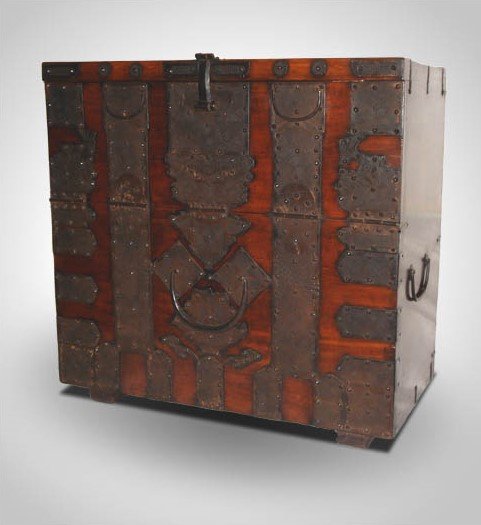
“Sung Sun I” Bandaji with elm wood front,
Pine wood body (top, sides & back).
Iron fittings, oil finish. Pakchon area, Pyongan Do province.
Mid 19th Century.
H. 95cm, W. 110cm, D. 50cm. Collection: “ANTIKASIA”.
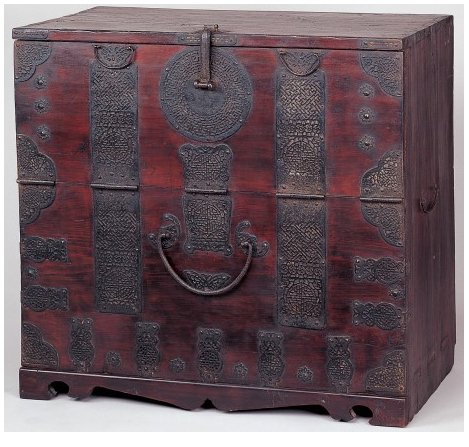
Pakchon area, Pyongan Do province. Late 19th century.
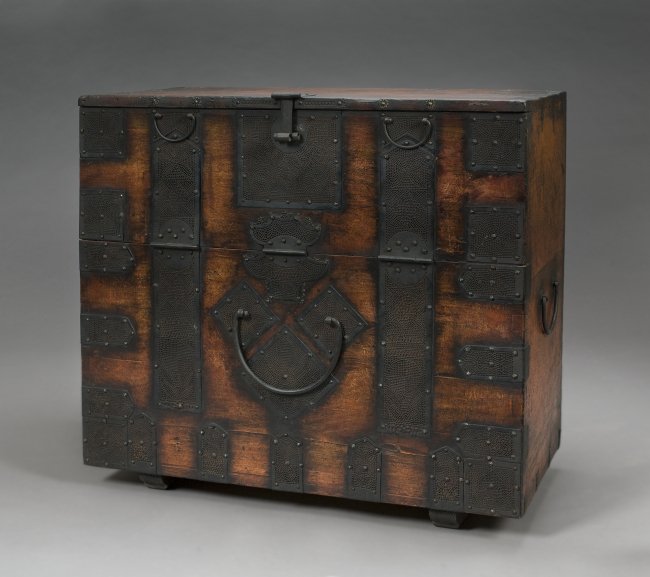
Sung Sun I style. Collection of the Weisman Museum of Art, Minneapolis, Minnesota, USA.
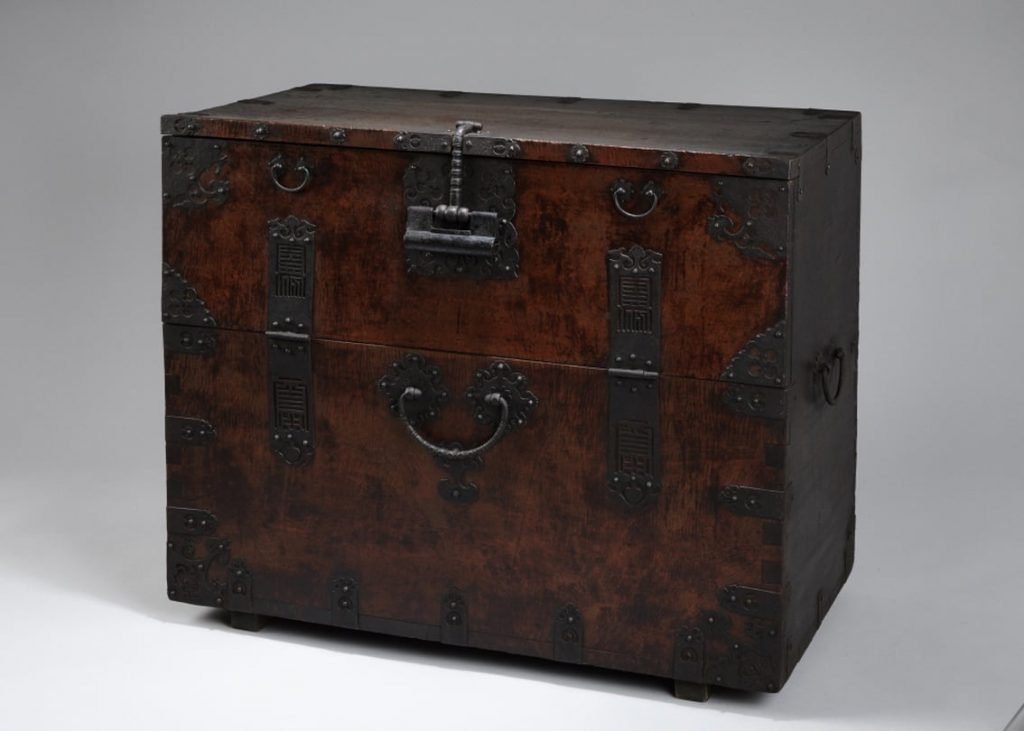
Pakchon area. 19th century.
H. 80cm, W. 98cm, D. 48,2cm.
Collection of the Horim Museum, Seoul, Korea.
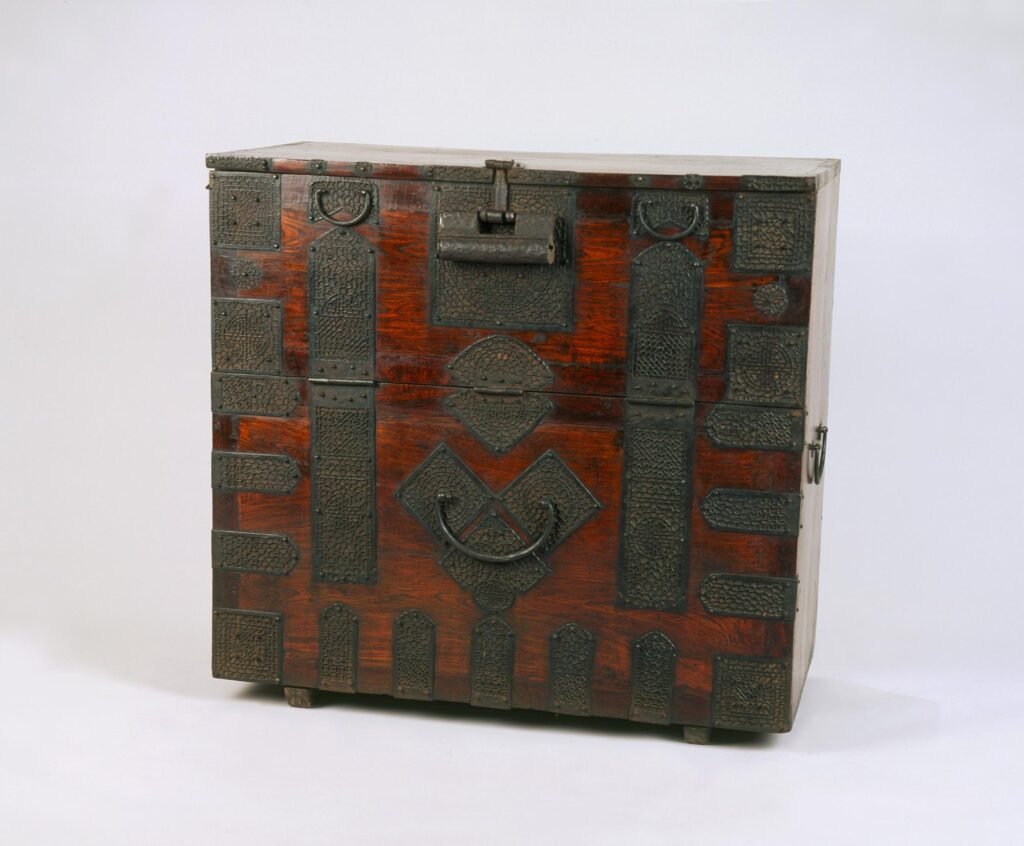
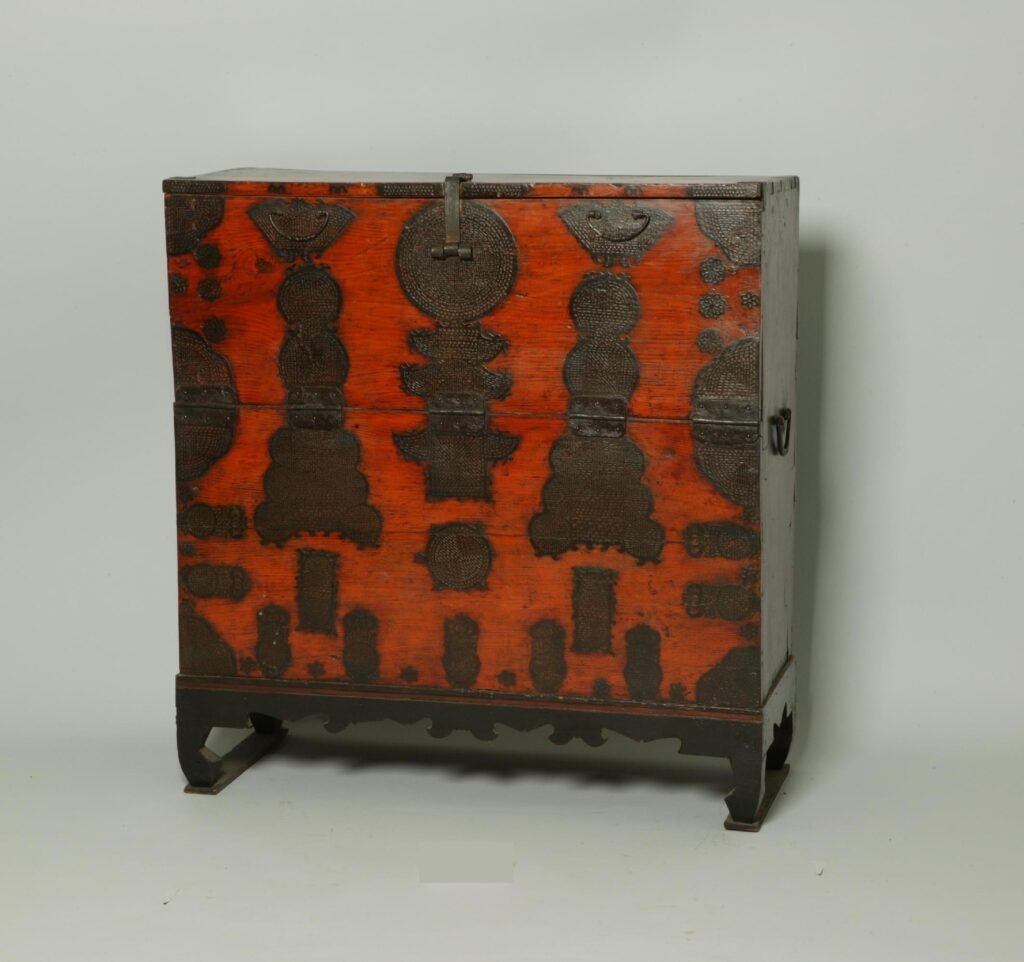
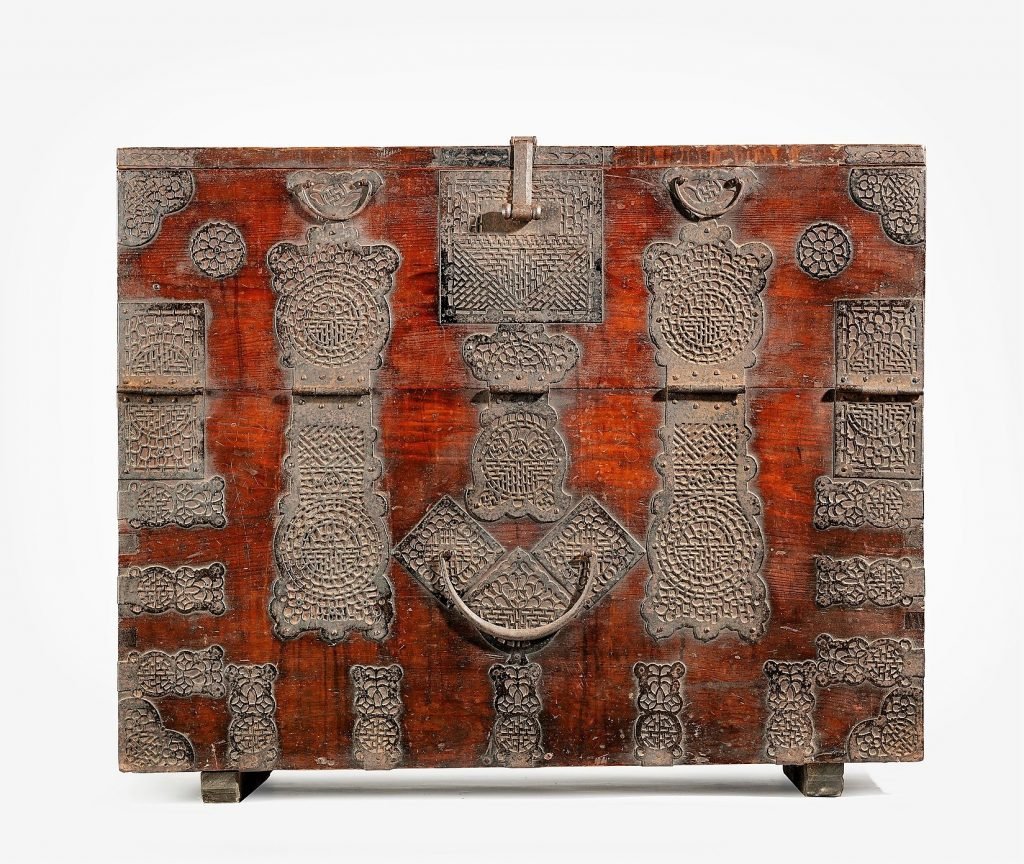
Pakchon area, Early 19th-20th Century,
H. 75,7cm, W. 93,4cm, D. 44,2cm. Collection The Jeju Craft Museum, Korea.

Pakchon area, Early 19th century,
.H. 103,6cm, W. 112cm, D, 51cm. Collection National Museum of Korea.

Pakchon area, Early 19th-20th Century,
.H. 93,3cm, W. 90,5cm, D, 43,1cm.
Collection National Museum of Korea.

Pakchon area, Mid 19th century,
.H. 97,8cm, W. 97,5cm, D, 48,7cm.
Collection National Museum of Korea.

Elm wood front, Pine back and sides. Iron fittings.
Pakchon area, North Korea.
Late 19th century. H. 103cm, W. 107cm, D. 47cm.
The metalwork is finely wrought and unusually thick. The central metal piece is a South Gate motif. Collection: “ANTIKASIA“

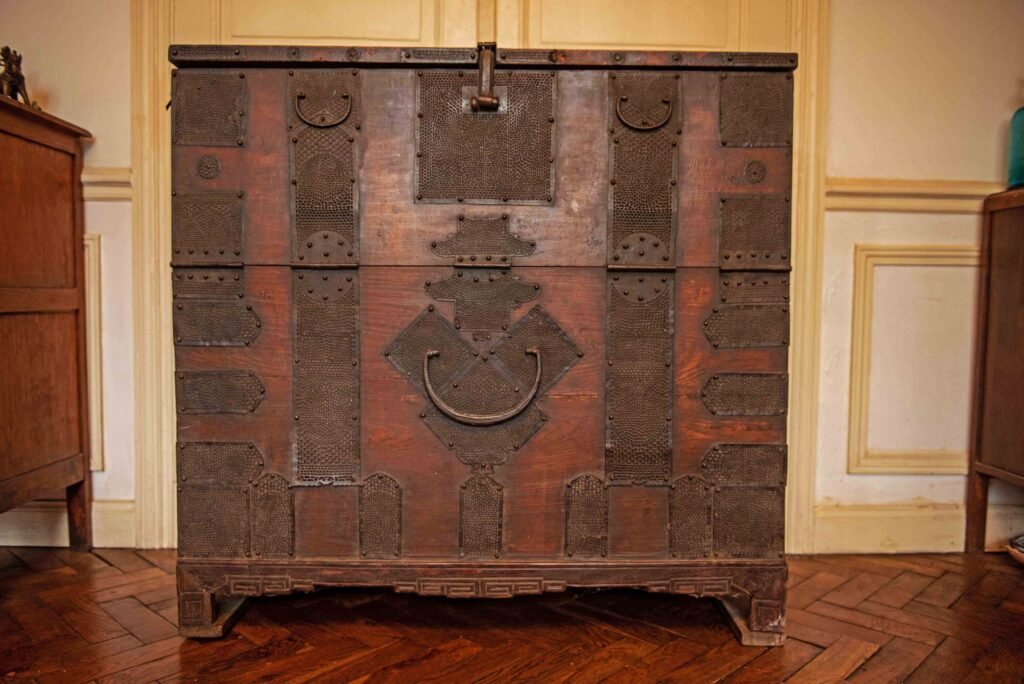
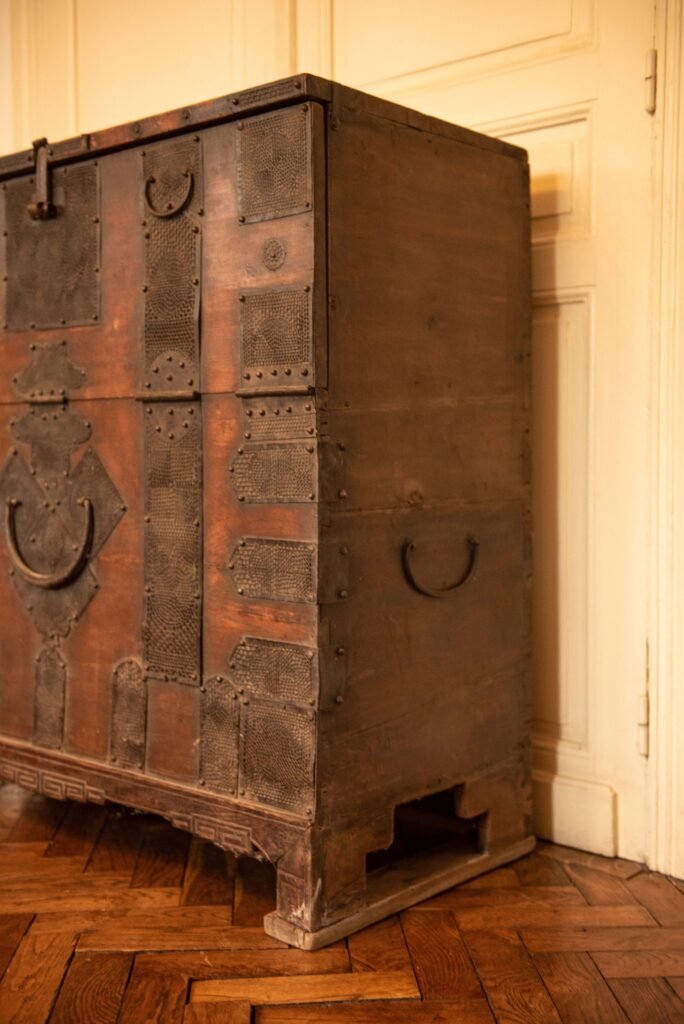
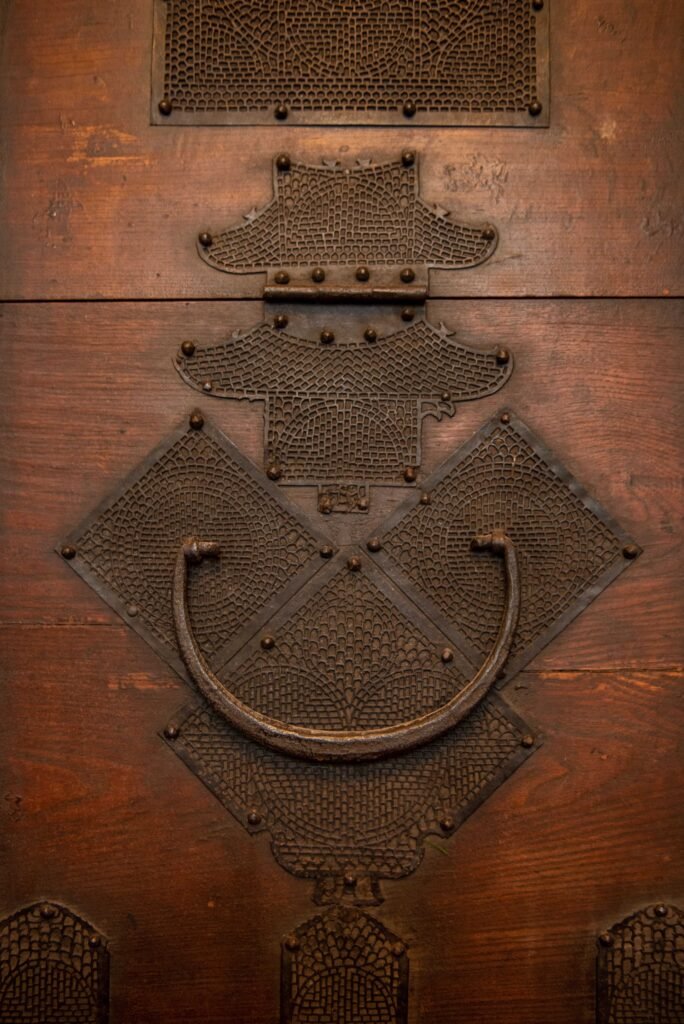
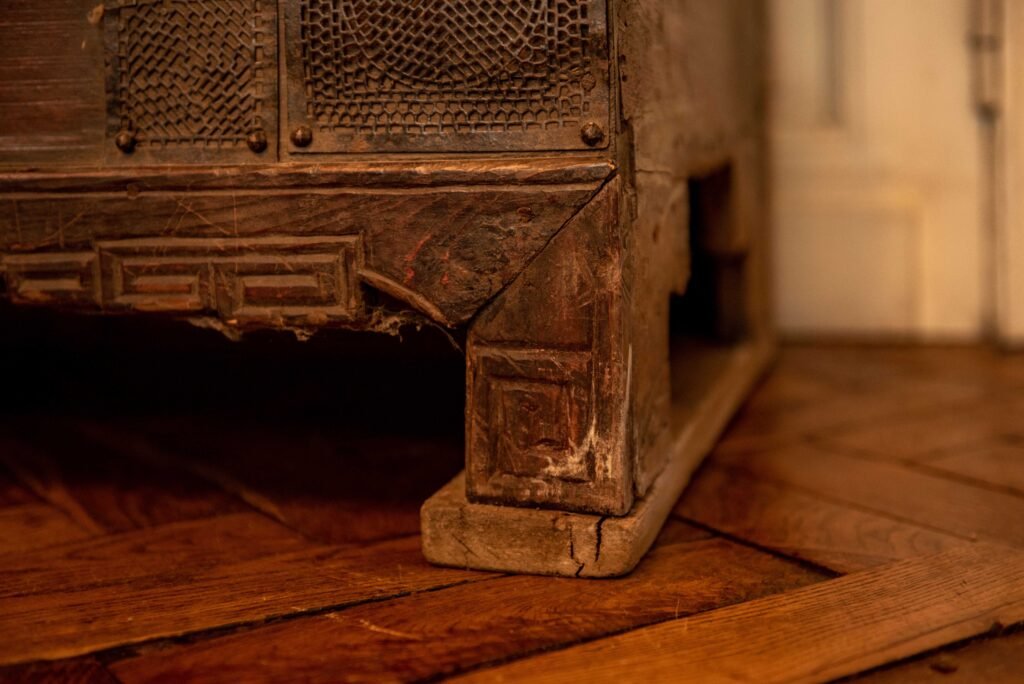
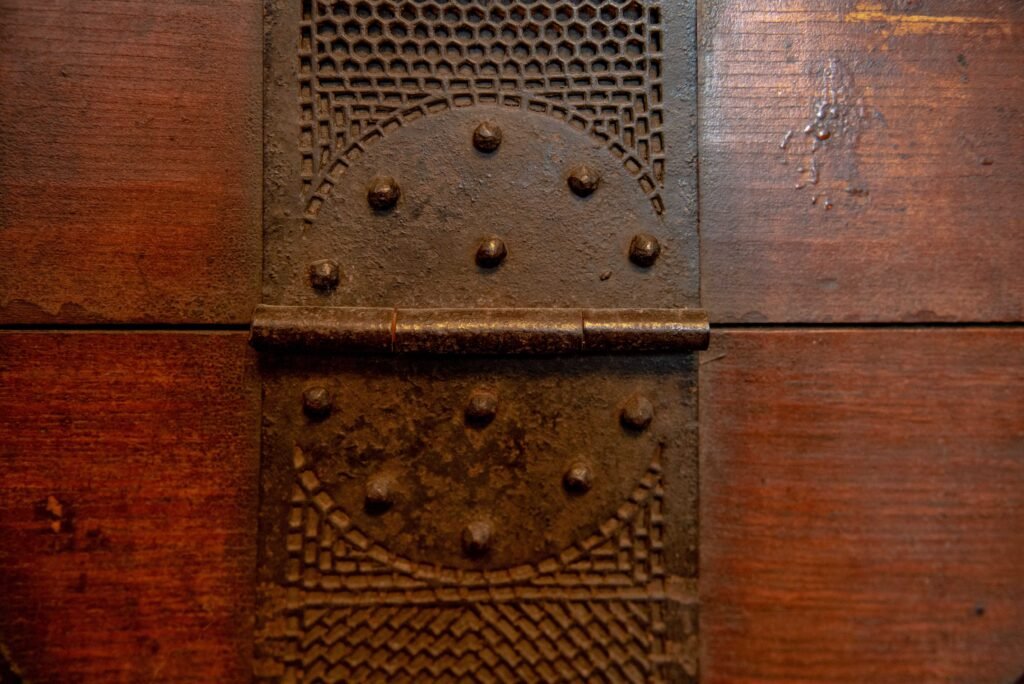
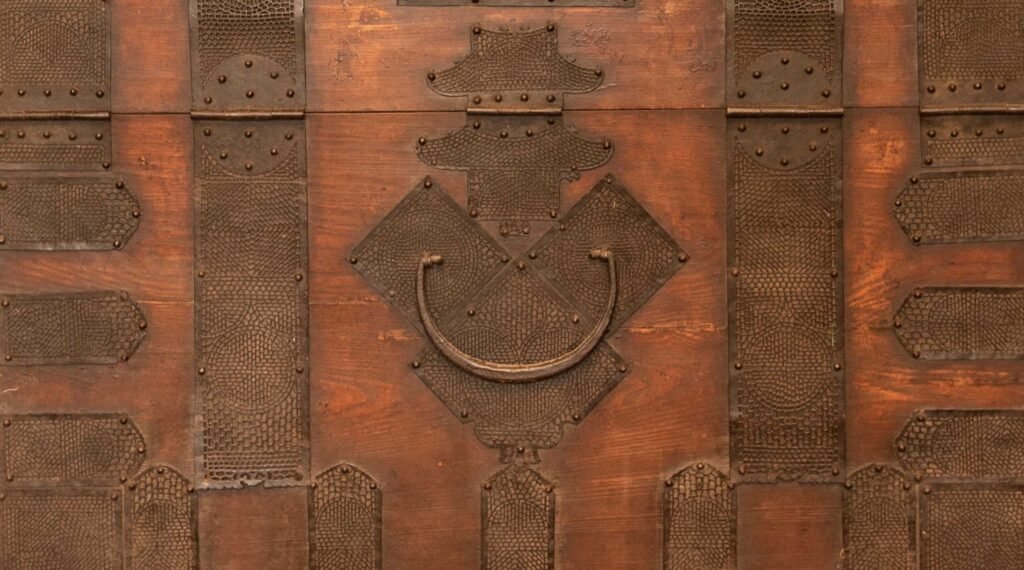
The “Sung Sun I” Bandaji from the Pyongan Do region in the northern part of the peninsula are relatively easy to identify, thanks to the abundance of carefully cut metal parts on their front. However, there are a few variations in terms of metalworking. As the illustrations in this post show, some were covered with very thin, finely cut metal plates, while others had thicker hinges. Perhaps a more thorough study would explain the reasons for these variations.
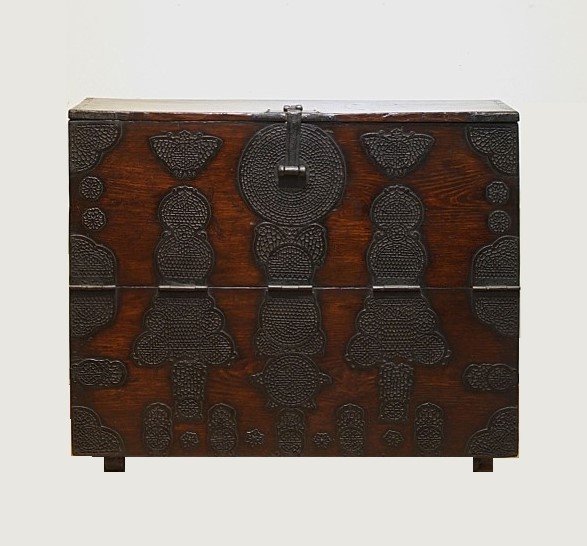
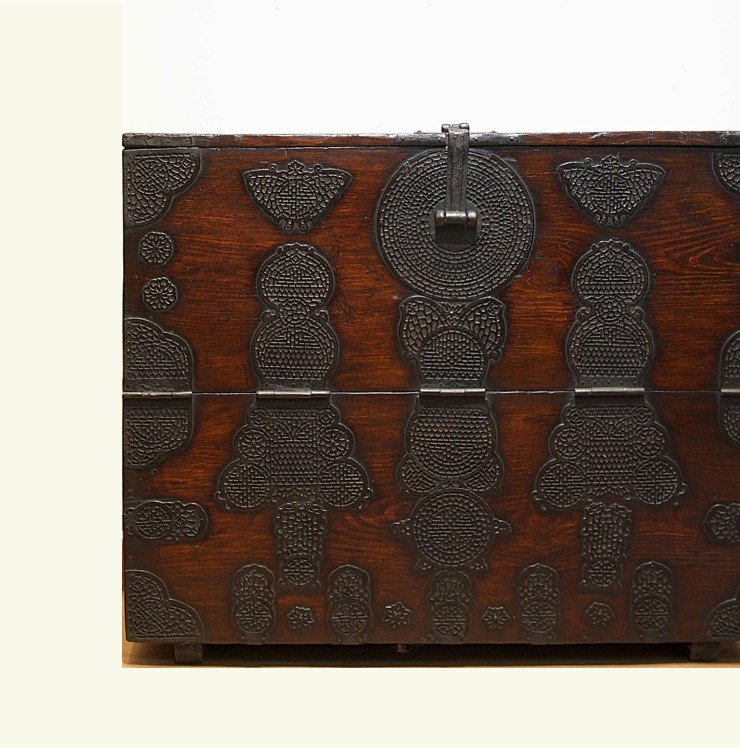
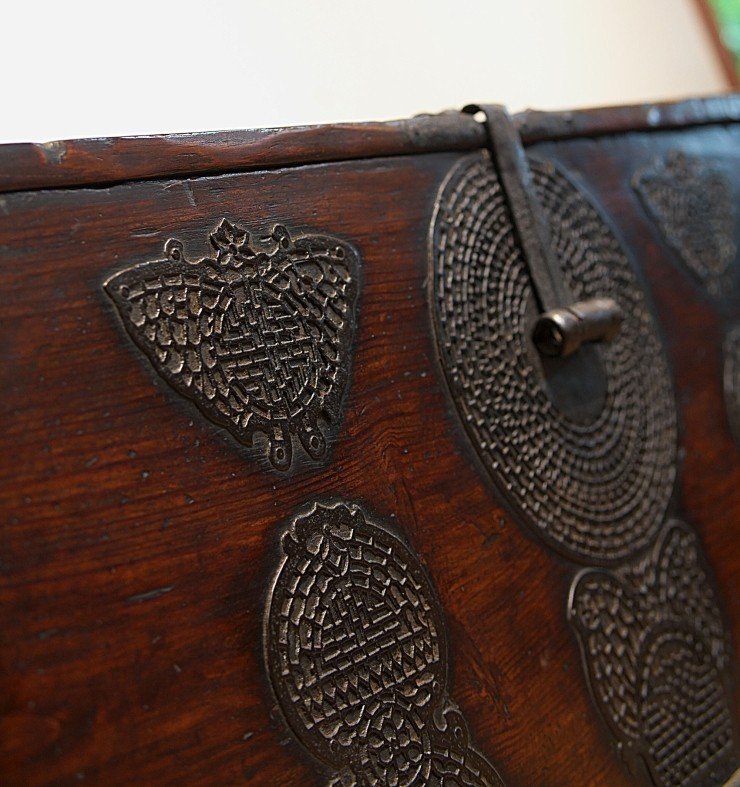
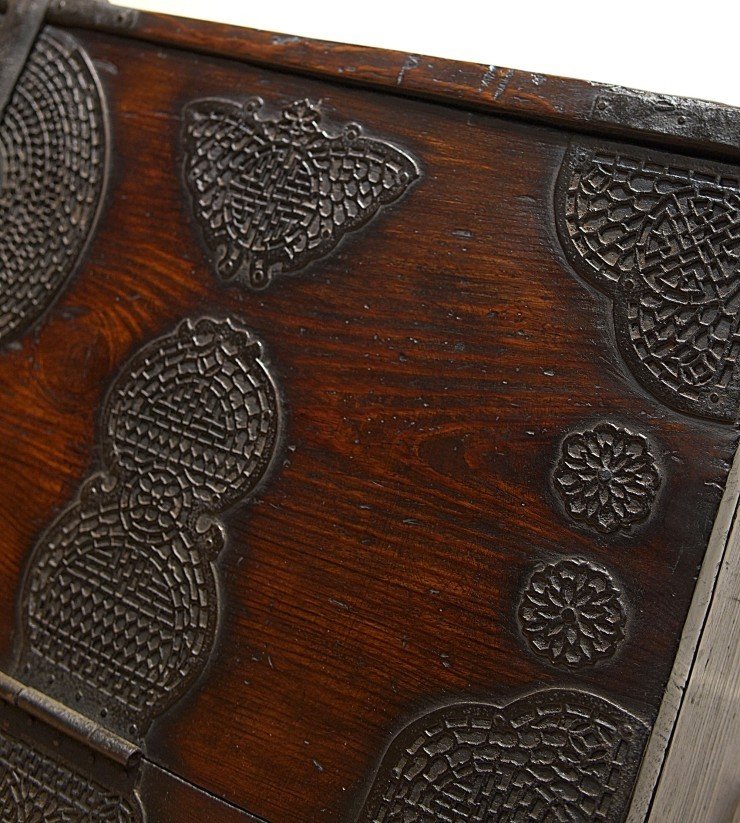
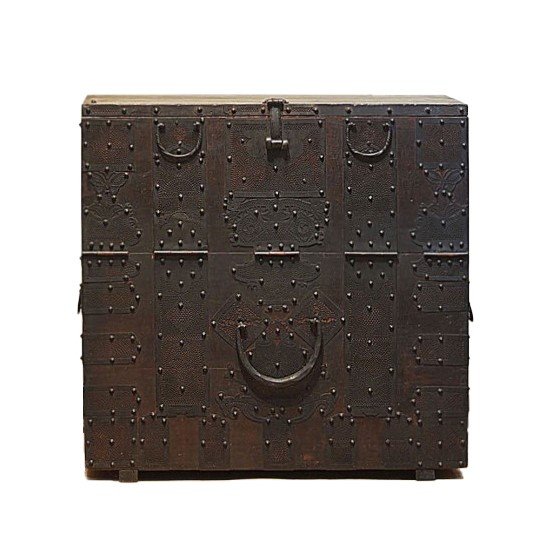
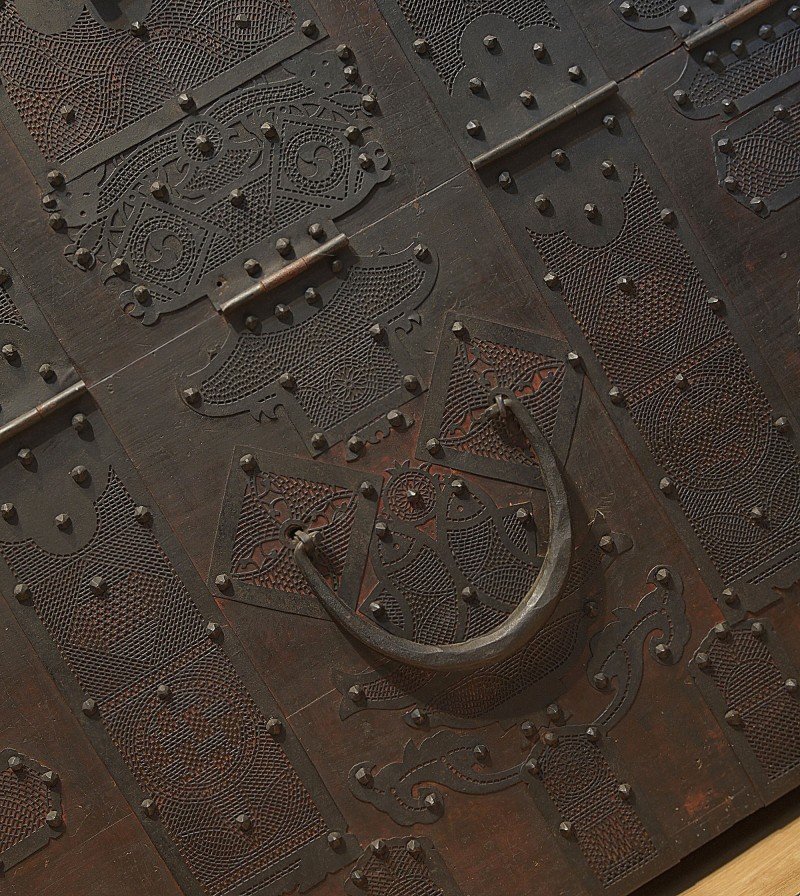
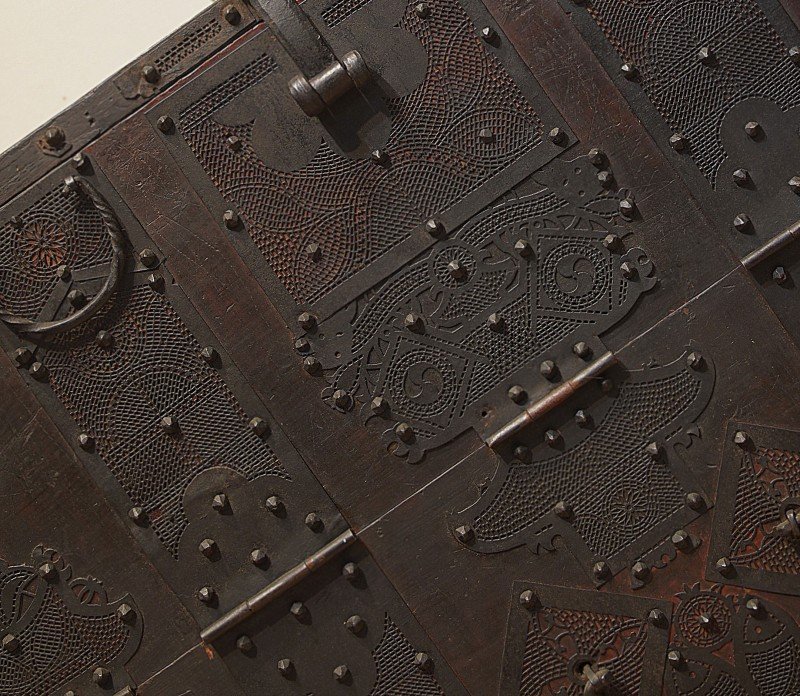

Constructed in tightly grained red pine wood, the chest has a nearly square form rested on two block feet. The elaborate ironwork hardware is distinct in their large and bold forms with recognizable cut-out design. Unique shapes include the swallow tail hinge in the center and the “Namdaemun” (South Gate) plate underneath. The pull on the front (and also the two on the sides, to a lesser extent) is unusually large and almost square in form. There is no lock. The interior is rather clean and lined with a thin rice paper.
Examining the piece, it is evident that it is in its original form and shows a nice patina incurred in its long life. It was probably taken from North to South Korean during the war and was sold on the antique market.
Among the collection of the Korean furniture, the largest in the world, in Weisman Art Museum at the University of Minnesota in Minneapolis, Minnesota, there is a nearly identical Bandaji. It is illustrated on plate 31 on page 51 in the book “Traditional Korean Furniture” by Edward Reynolds Wright and Man Sill Pai.
Another nearly identical Bandaji is illustrated on page 75 of “Korean Chests Treasures of the Yi Dynasty” by Wickman.
Another similar Pakchon Bandaji is held in the collection of Minneapolis Museum of Art.
Collection: Chairish, Inc. San Fransisco, USA,
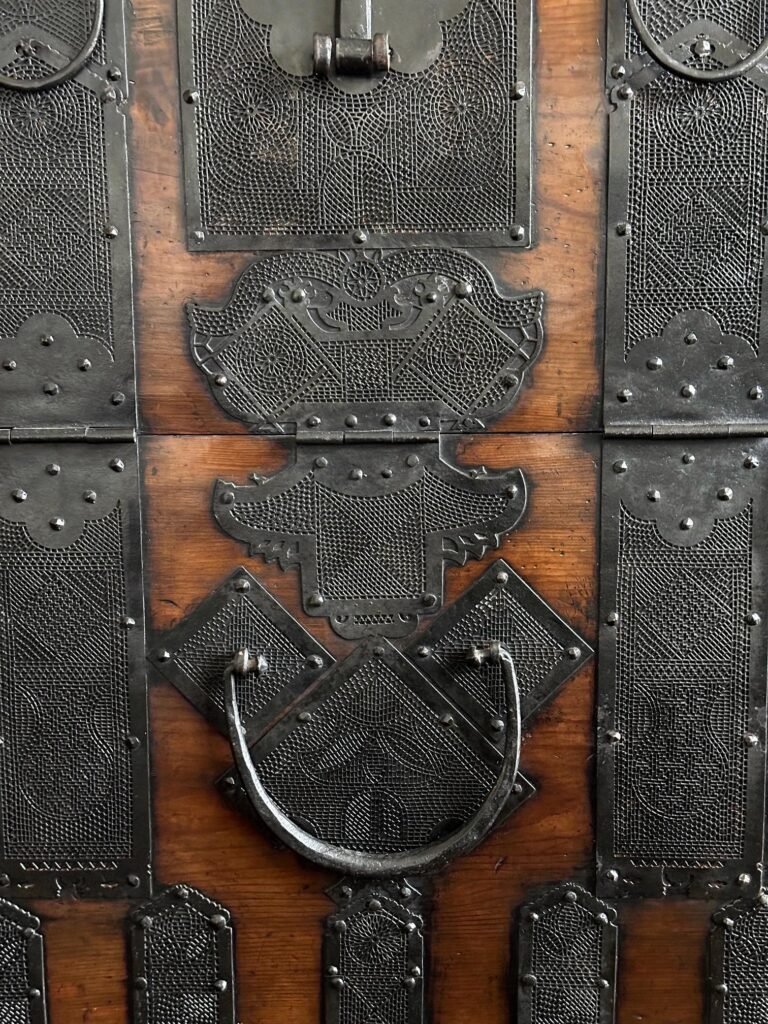
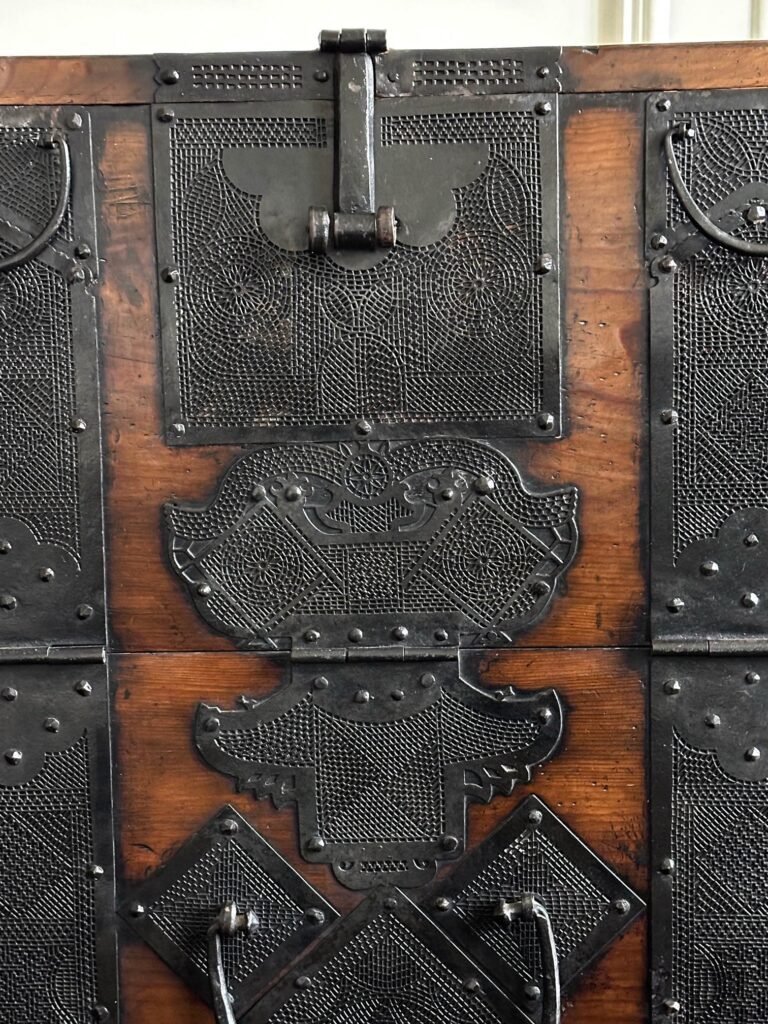


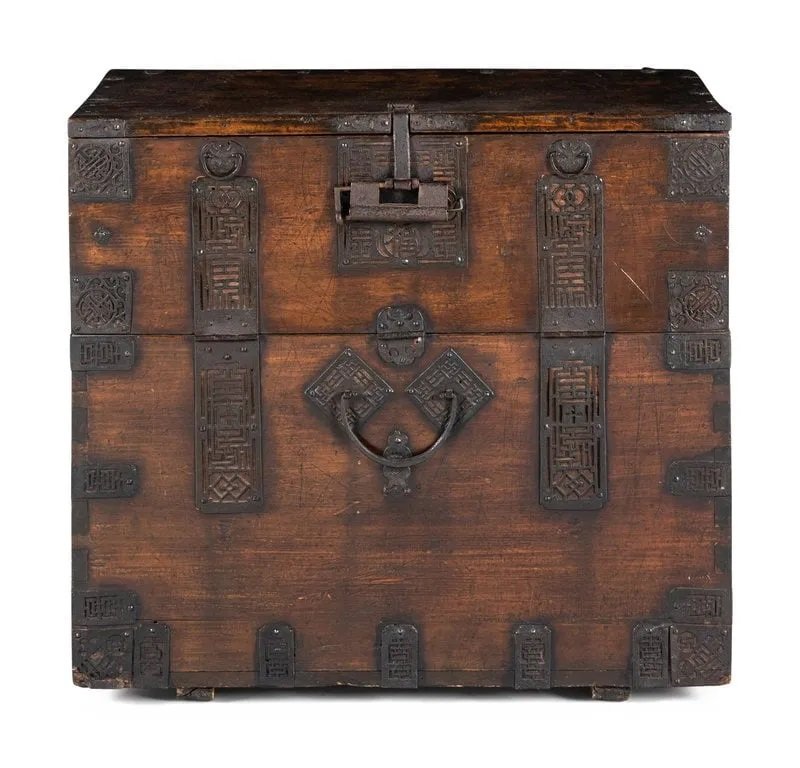
An intriguing piece of furniture in its original condition. Late 19th to early 20th century. The wood is hard to identify from the photos, but we believe it could be pine or linden. The original hinges suggest it originates from the northern provinces of the peninsula (Pyongan Do). This piece, known as a ‘Sung Sun I’ bandaji, features metal parts with a design and thickness typical of the southern part of the province near Hwanghae province. We have included a drawing of the metalwork. It has a good patina.
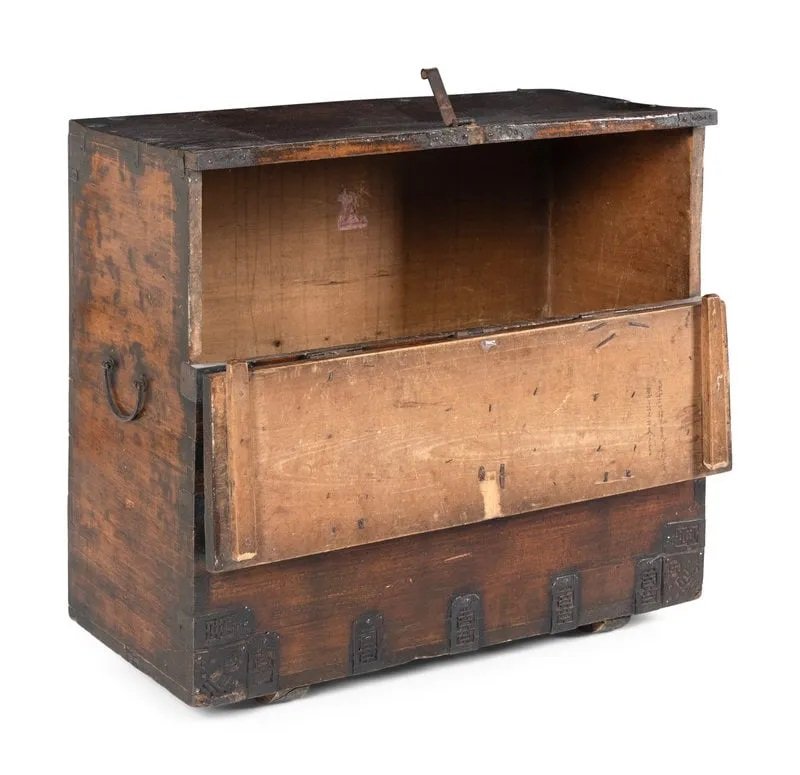
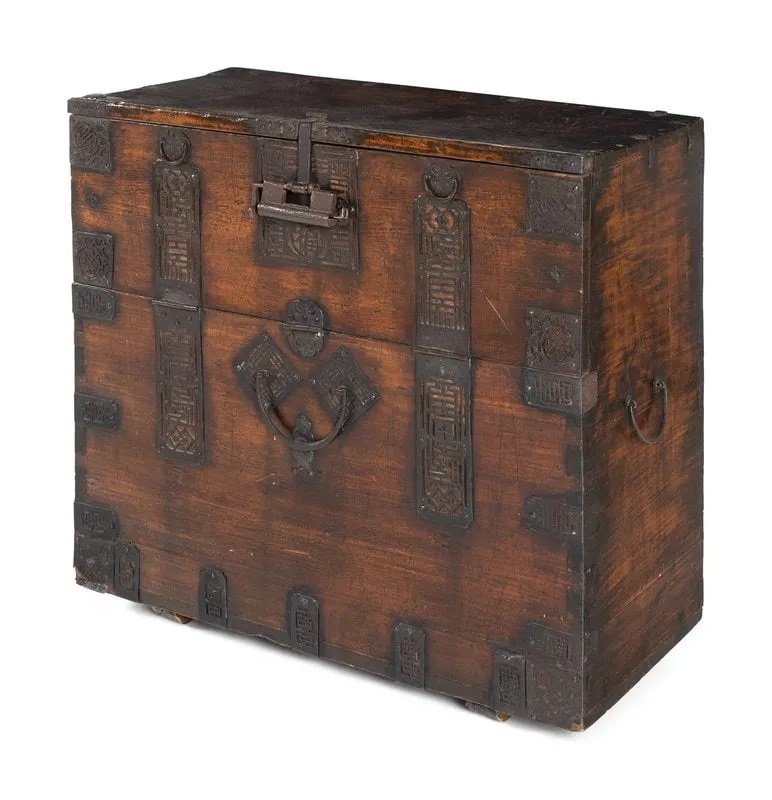
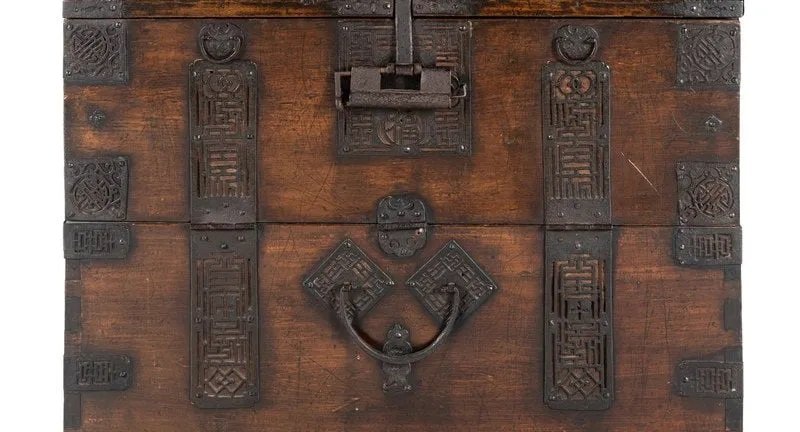
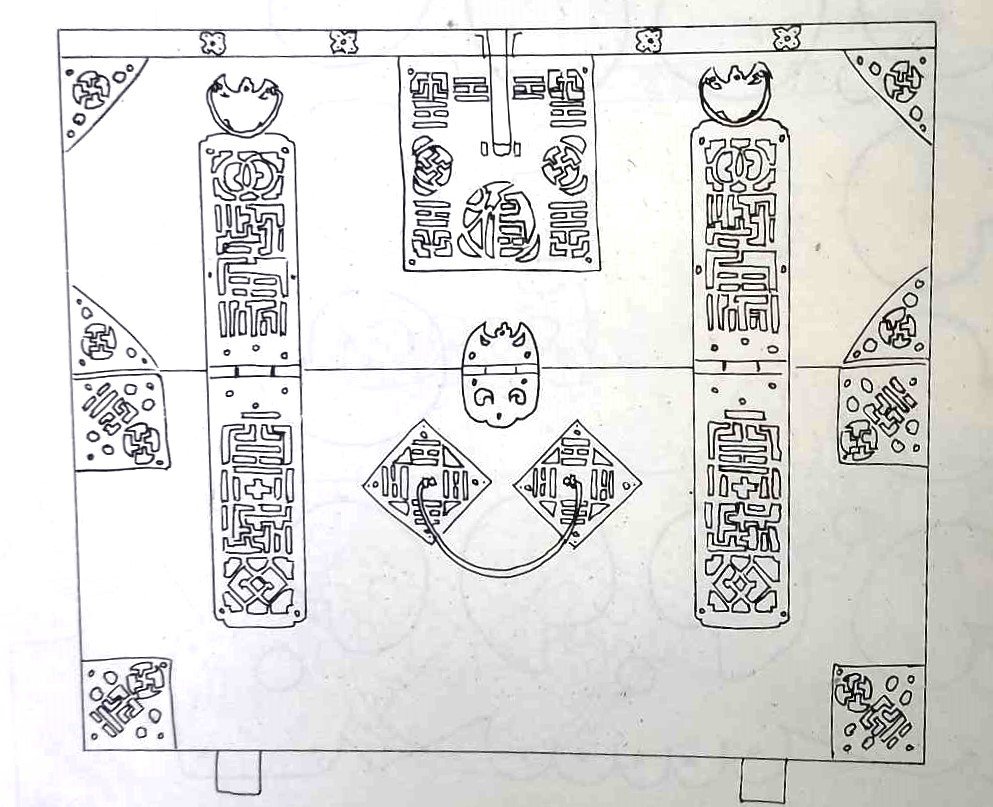

Red pine wood, iron fittings, southern part of the Pyongyang province near Hwanghae province.
Mid 19th Century.
H. 70cm, W. 80cm, D. 40cm.
Very fine small blanket chest made from thin wooden panels.
Iron work on this piece is finely incised and very similar to chests from the Northern part of the peninsula.
Metalwork decorative patterns includes the bat drawer pullers, longevity characters on door hinges as well as “Manja” patterns on corner pieces.
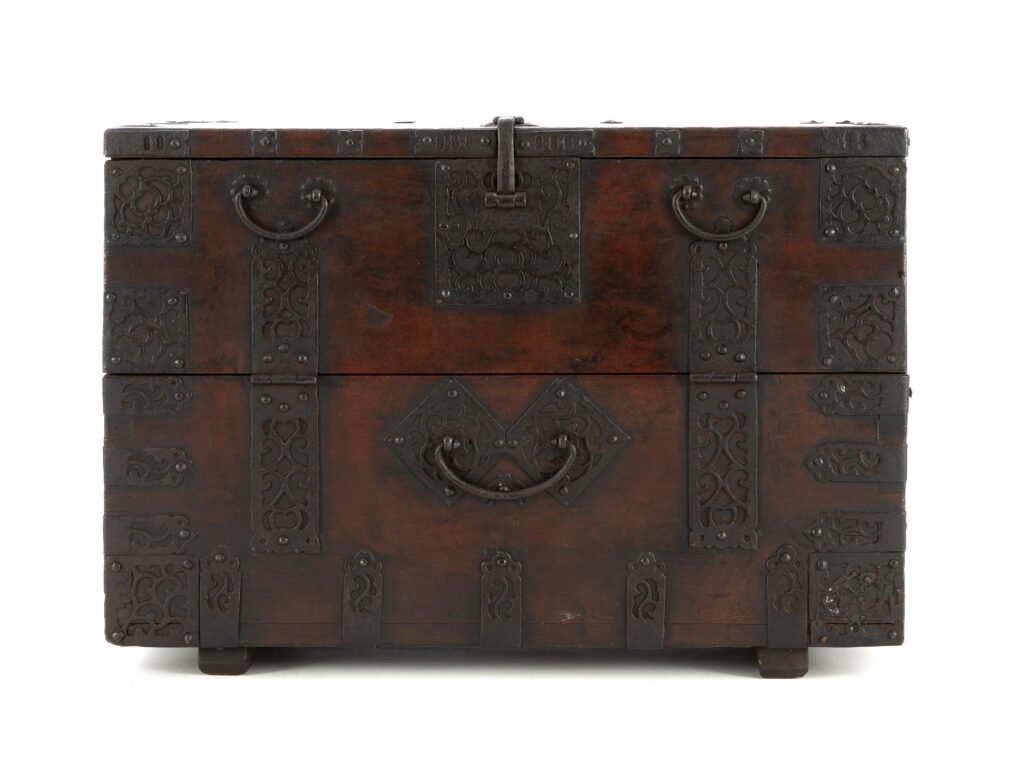
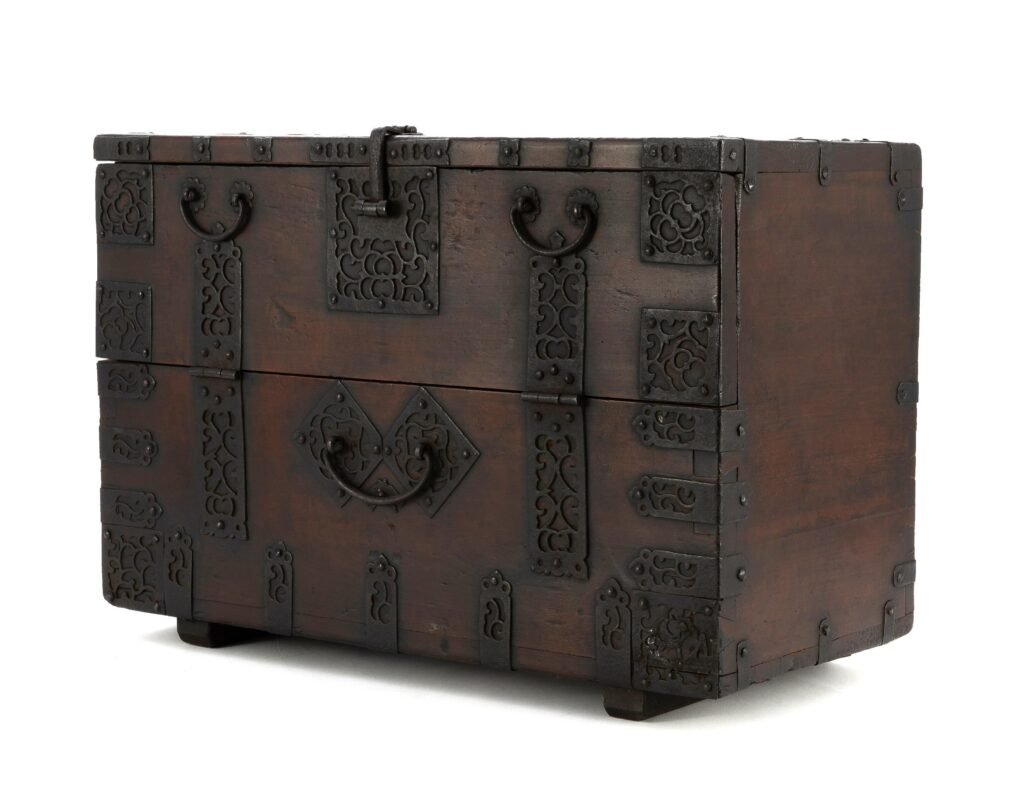
Certain decorative patterns on the hinges are unique to northern pieces of furniture and allow for easier identification. The following patterns are common on Pyongyang Bandaji white brass fittings.
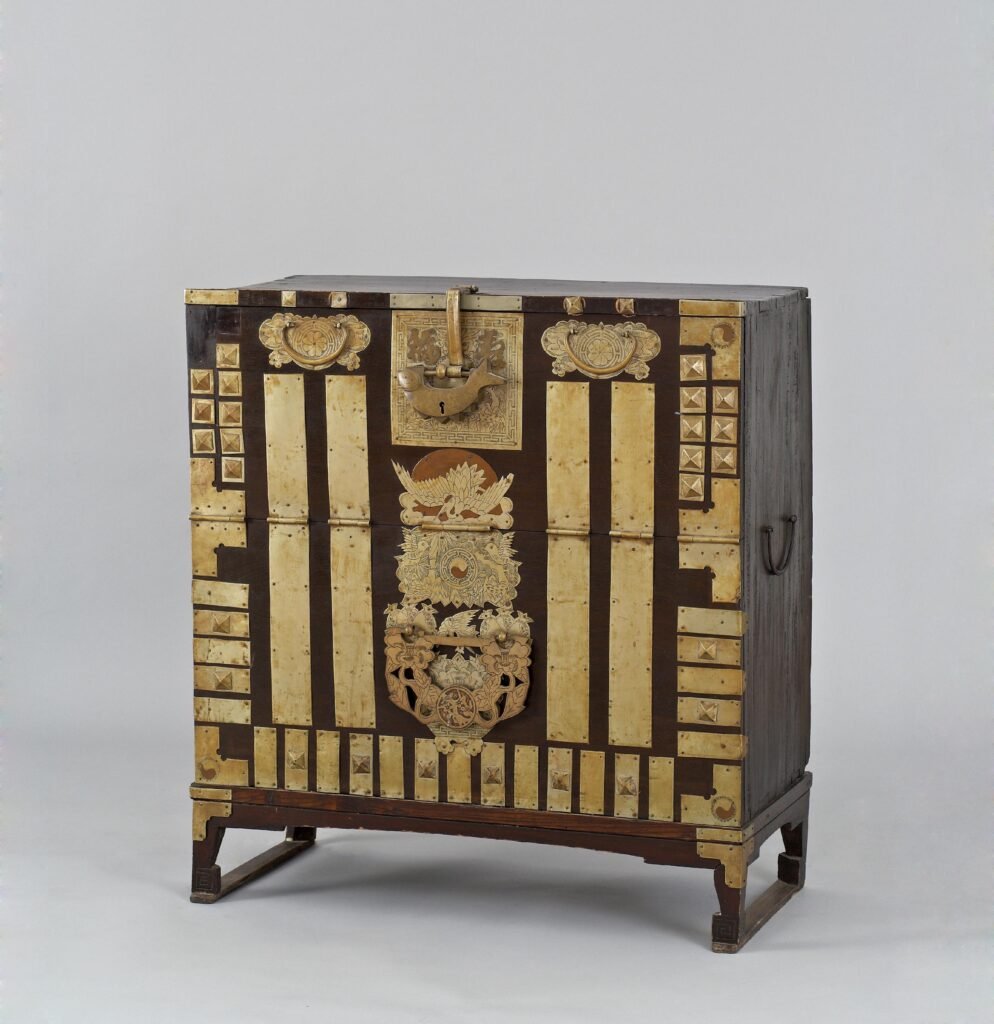
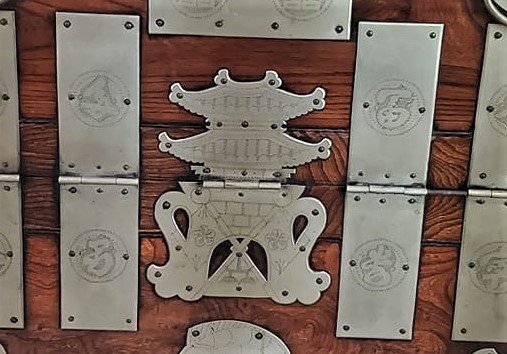
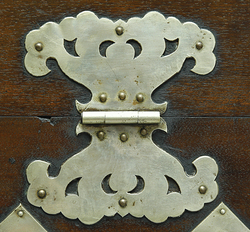

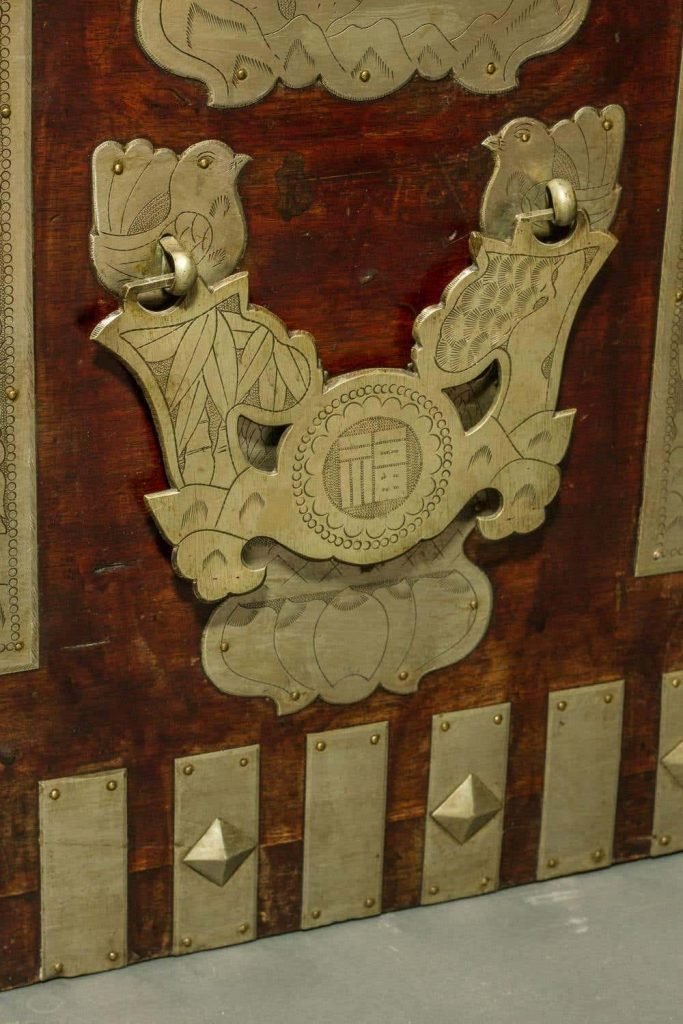
Very intricate metal work on a “Sung Sun I” Bandaji from Pakchon area in Pyongan Do province.
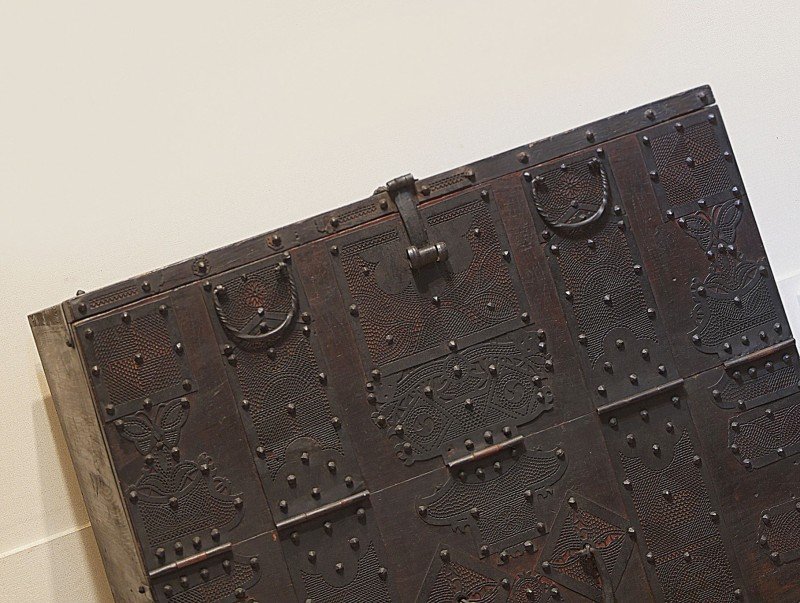
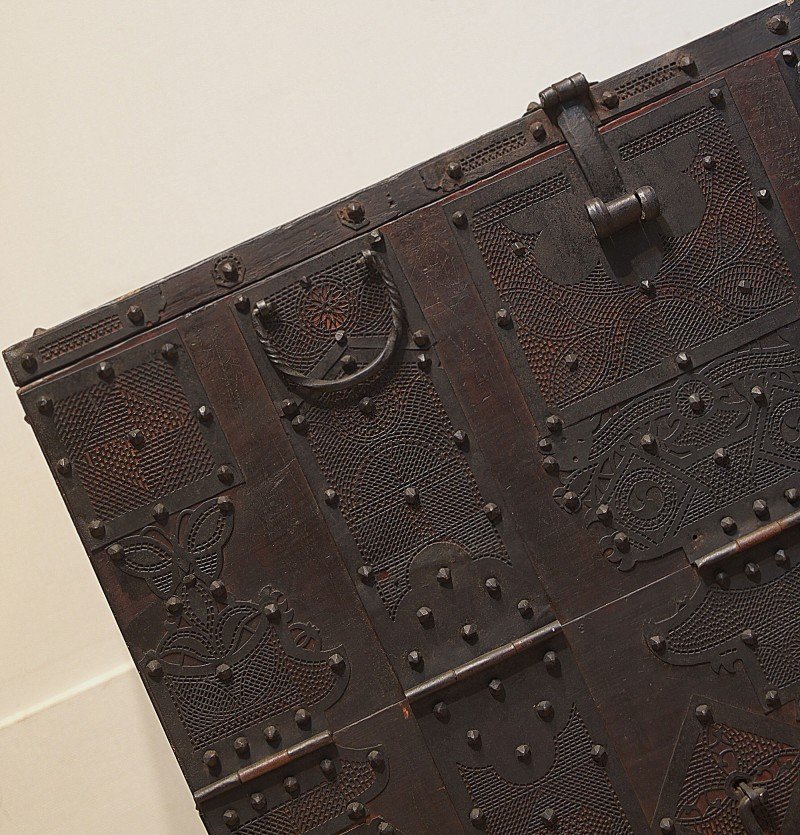
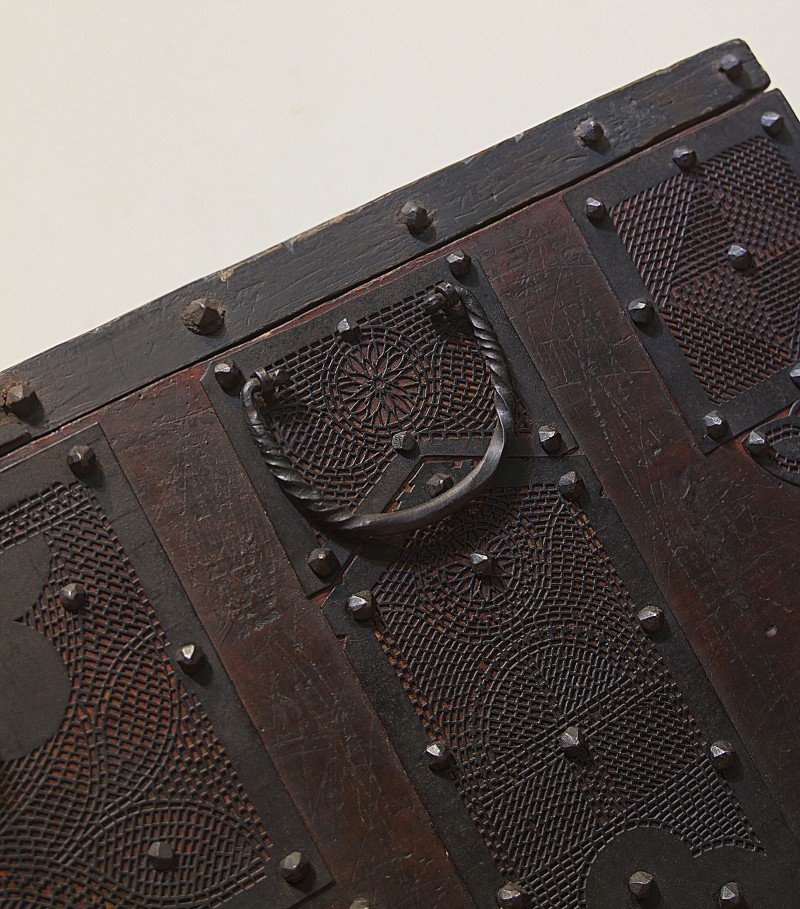
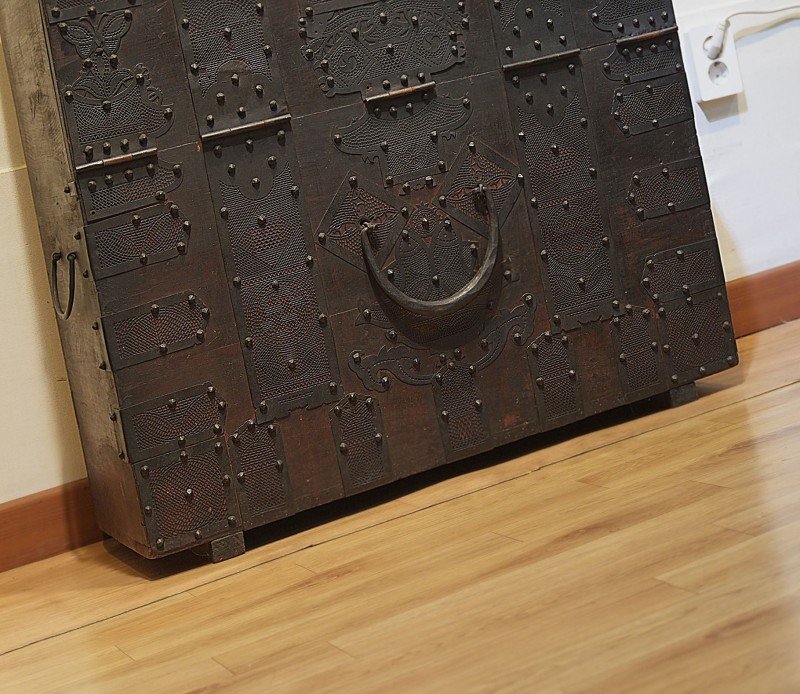

Collection: National Folk Museum.

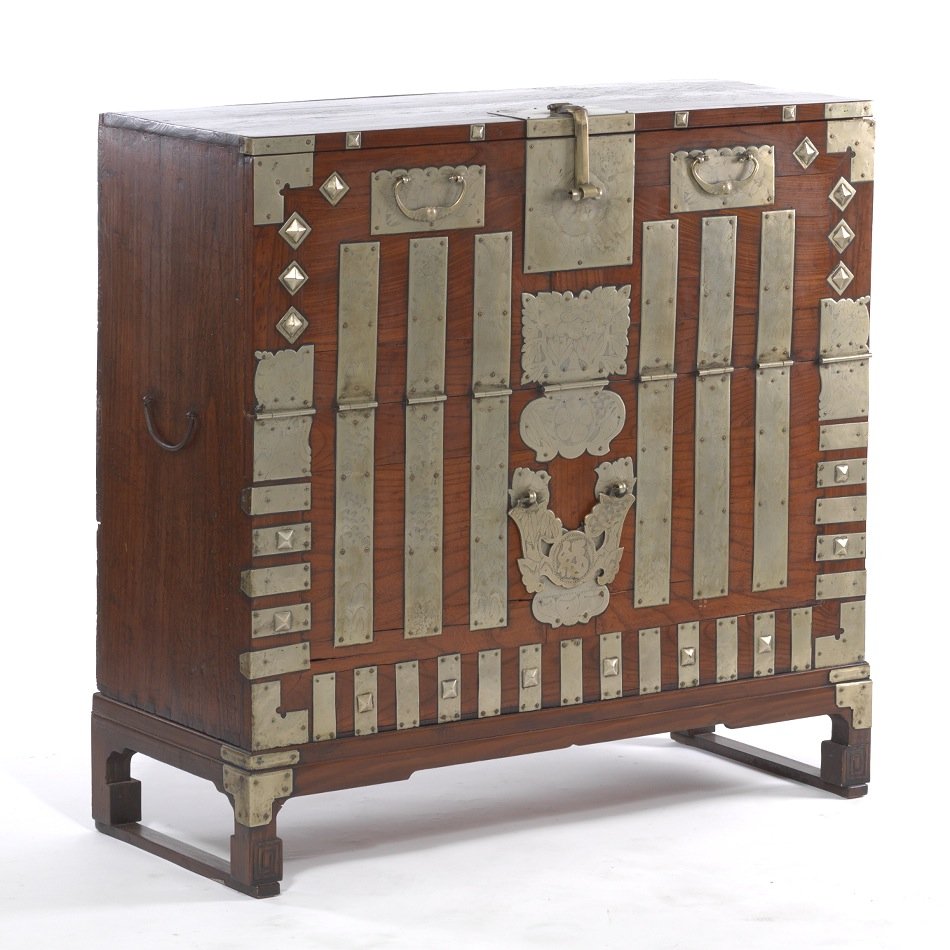
[…] LINK: FURNITURE FROM THE NORTHERN PROVINCES. […]